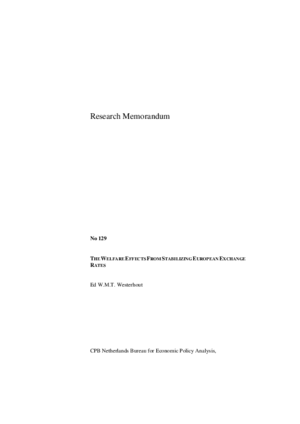The welfare effects from stabilizing European exchange rates
Examples are the reduced conversion costs and the costs attached to printing and getting used to a new currency. More importantly however may be the effects that EMU will exercise upon the conduct of economic policies. The optimum currency area literature focuses on the costs of giving up an instrument of economic policy by irrevocably fixing intra-European exchange rates. The optimal taxation literature stresses the loss of seigniorage revenues that may result for high-inflation countries. The political-economy literature recognizes the reputational effects of EMU with respect to monetary as well as fiscal policies.
Still, one argument seems to have been largely overlooked: EMU will abandon exchange rate risks that may have a potentially large impact upon the portfolios of international investors. Indeed, the large home bias that is apparent in most international portfolios suggests a major role for exchange rate risk. Consequently, its abandonment may seriously affect the portfolio-allocation decisions of international investors. On the other hand, the efficiency gains of exchange rate stabilization may be less large. By restructuring their portfolios, investors may be able to hedge against exchange rate risk. Moreover, variable exchange rates may give rise to speculative profits. Investors who realize that a currency is going to depreciate, may exploit this opportunity by directing their portfolios away from this currency. Exchange rate stabilization will deprive investors of these profit opportunities by shifting inwards their production frontiers.
This research memorandum explores the efficiency gains that international investors may reap from EMU. Analytically, it is shown that the effect may be positive or negative, depending on whether the benefit from risk reduction dominates the loss from reduction of speculative gains. Moreover, the gain from risk reduction is shown to depend on the amount of public debt and the imports of goods and services from abroad. Numerical calculations support this conclusion: some calculations point to a net gain, others to a net loss. Next, these calculations show that the welfare gains differ widely across the EU. In particular, the welfare gain tends to be larger for countries with small amounts of public debt and few imports from abroad. Finally, our numerical calculations suggest a minor role for exchange rate stabilization. The EU as a whole is calculated to gain at most 0.3 percent of initial wealth from the stabilization of exchange rates.
Downloads
Authors

